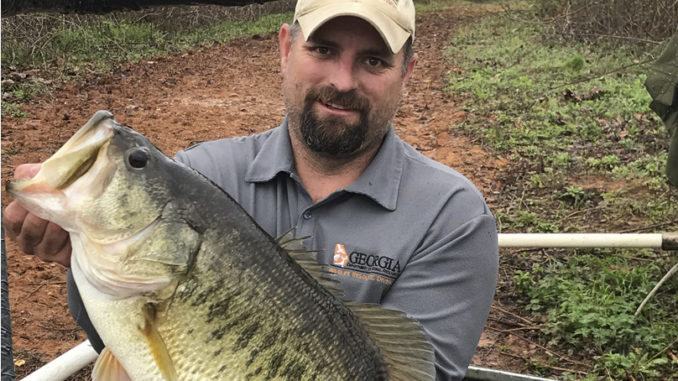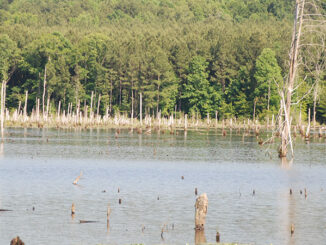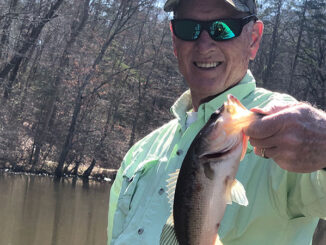
NCWRC to stock 2,000 F-1 bass, crosses between Florida-strain and largemouths
Bass fishermen who frequent Lake Norman’s 32,500 acres in North Carolina’s Foothills might notice something a little different about the largemouth bass they catch a few years down the road.
They might be bigger.
The N.C. Wildlife Resources Commission has decided to do an experimental stocking this fall with F-1 largemouths, a first-generation cross between northern bass and Florida-strain largemouth known for reaching larger sizes with fast growth rates.
The Commission met with a group of fishermen from the Lake Norman area earlier this year. The anglers asked the agency to try something to help the fishery. Norman is now made up of approximately 80% Alabama spotted bass and 20% largemouths.
The initial stocking is a starting point, hopefully to more stockings in the future
“We listened to them, watched what other states are doing, looked at the state of the fishery in Norman, and we decided to introduce 2,000 of the F-1 bass this fall,” said Lawrence Dorsey of Albemarle, a fisheries biologist with the Commission. “We’re going to stock advanced-sized fish, 6 to 9 inches. The fishermen are going to raise the funds to pay for them, and we’re going to arrange to get the fish from a commercial producer. We will get them and mark them with a coded wire tag in the cheek that won’t be visible, and when we electroshock fish in the spring, we’ll be able to identify these fish by running them under a metal detector.
“This is a limited evaluation for Lake Norman. The 2,000 fish is a starting point; we’ll see how it goes from there,” Dorsey said. “From our perspective, we don’t have any indication that these fish will displace Alabamas in Norman. We just want to know, will we see some individuals pop up larger than the lake has been producing. Those would be the F-1s.”
Dorsey said he expects the Commission to have the fish in hand by mid-October. The tags will be inserted at the McKinney hatchery near Ellerbe. Shortly thereafter, the fish will find their new home in Norman, which has experienced the effects of Alabama spotted bass outcompeting and largely displacing largemouths, as they have in several other North Carolina reservoirs.
NCWRC will conduct surveys to monitor progress of the F-1
“Virginia has been stocking the F-1 bass in Smith Mountain (Lake) for the past five years. So we have some history available to try and learn what they’re doing,” he said. “Tennessee has been stocking pure Florida-strain bass, Georgia as well. If you cross northerns and Florida bass, that first-grade cross is the one that gets the biggest growth amount, the best growth patterns. The longer they stay out there, the more the F-1s and northerns cross, the less impact they have. Putting in these F-1s, we want to see if we can wind up with some bigger, individual fish.
“We don’t know what will happen with this stocking in the situation with the Alabamas. Most places they’ve been put in on purpose, they aren’t really increasing the average size of the largemouths. But you get a few fish of exceptional size.”
Dorsey said that largemouth bass seem to do better in certain areas of Lake Norman, including the upper end of the lake, back in creek arms and in the river section. He didn’t say the stocking would be particularly concentrated on those areas. But he did say that the Commission would be looking for them in surveys in subsequent years to see how well they’ve survived. And they will also look at growth rates and overall sizes.





Be the first to comment